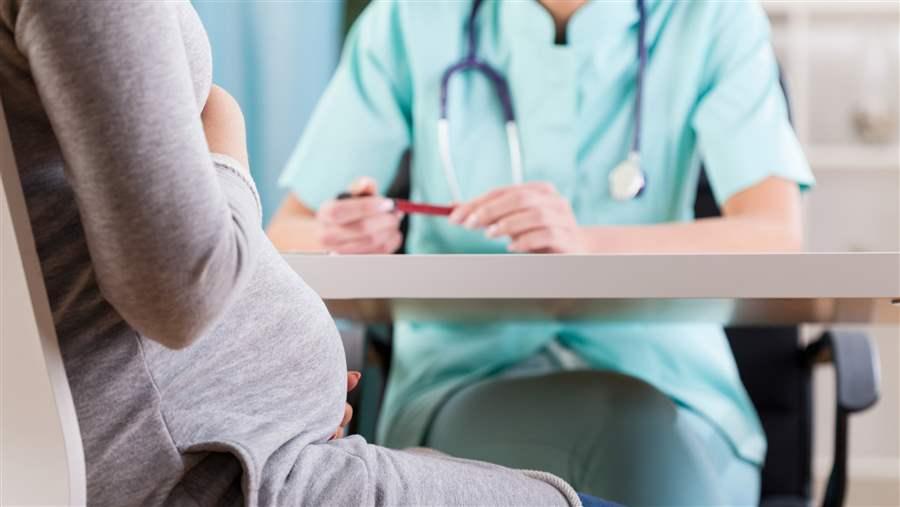Opioid Misuse in Pregnant and Postpartum Women Is on the Rise
New mothers need treatment, but access to effective care is limited

Providing effective opioid use disorder treatment for pregnant and postpartum women makes sense from both a public health and a financial standpoint.
© istockphoto
National Women’s Health Week, a celebration May 14 to 20 led by the U.S. Department of Health and Human Services, encourages women to make their physical and mental health a priority. Now in its 18th year, this week’s observance is more important than ever given pregnant women’s increasing use of opioids,1 such as prescription pain relievers, heroin, and illicitly manufactured fentanyl. According to the Substance Abuse and Mental Health Services Administration, approximately 21,000 pregnant women used opioids for nonmedical reasons in the past month alone.
Ensuring that these women receive treatment for opioid use disorder before, during, and after pregnancy is critical to improving their health and that of their infants. The most effective therapy is medication-assisted treatment (MAT), which combines Food and Drug Administration-approved drugs with behavioral interventions, such as counseling. Unfortunately, access to MAT and other therapies is sorely inadequate; of the more than 21 million people in the United States with a substance use disorder, only about 1 in 10 receives any treatment.2
Stigma has undoubtedly contributed to this sizable treatment gap. For too long, substance use disorders have been viewed as personal failings, when in fact they are chronic, relapsing diseases—similar to cancer or diabetes—that require ongoing treatment. Women struggling with these conditions need compassion and understanding, as well as immediate access to treatment and support services.
Our current health care system is not prepared to provide this care. For example, only 23 percent of publicly funded treatment programs report offering any of the FDA-approved medications integral to MAT, and less than half of private sector treatment programs report that these drugs have been prescribed by their physicians. In addition, more than half of U.S. counties don’t have a single physician with the specialized training and license required to prescribe buprenorphine, one of the three FDA-approved medications.3
Even when pregnant and postpartum women do receive treatment, they often have no access to the specialized services that make remaining in treatment possible, such as obstetric care and child care. In fact, only 19 states have any treatment programs designed for pregnant women4 even though such programs have been shown to reduce the risk of postpartum relapse and overdose.5
Providing effective treatment for pregnant and postpartum women makes sense from both a public health and a financial standpoint. Studies show that women who complete treatment programs have a lower risk of relapse.6 The American College of Obstetricians and Gynecologists supports the use of MAT for pregnant and postpartum women with an opioid use disorder. According to the organization, comprehensive prenatal care that includes MAT can also reduce the risk of birth complications.
Opioid misuse in pregnant and postpartum women has become a national health issue. This disorder can have devastating effects on new mothers and babies, and requires a robust response from policymakers and the public health community. States grappling with the problem must do more to provide effective treatment for women at all stages of pregnancy. The Substance Abuse and Mental Health Services Administration currently provides funding to help states offer comprehensive prevention, treatment, and recovery support services for pregnant and postpartum women and their children. Moving forward, Congress should ensure ongoing financial support for this and other programs that support state efforts to provide appropriate treatment for this vulnerable population.
Cynthia Reilly directs The Pew Charitable Trusts’ substance use prevention and treatment initiative; Andrew Whitacre works on the project.
Endnotes
- Richard Epstein et al., “Increasing Pregnancy-Related Use of Prescribed Opioid Analgesics,” Annals of Epidemiology 23, no. 8 (2013): 498–503, http://dx.doi.org/10.1016/j.annepidem.2013.05.017.
- Substance Abuse and Mental Health Services Administration, Center for Behavioral Health Statistics and Quality, “National Survey on Drug Use and Health (NSDUH)” (2015), https://www.samhsa.gov/data/sites/default/files/NSDUH-FFR1-2015Rev1/NSDUH-FFR1-2015Rev1/NSDUH-FFR1-2015Rev1/NSDUH-National%20Findings-REVISED-2015.pdf
- Roger A. Rosenblatt et al., “Geographic and Specialty Distribution of US Physicians Trained to Treat Opioid Use Disorder,” Annals of Family Medicine 13, no. 1 (2015): 23–26, http://doi.org/10.1370/afm.1735.
- Guttmacher Institute, “Substance Abuse During Pregnancy,” accessed April 13, 2017, www.guttmacher.org/statecenter/spibs/spib_SADP.pdf.
- Substance Abuse and Mental Health Services Administration, “A Collaborative Approach to the Treatment of Pregnant Women With Opioid Use Disorders: Practice and Policy Considerations for Child Welfare, Collaborating Medical, and Service Providers,” accessed May 1, 2017, https://ncsacw.samhsa.gov/files/Collaborative_Approach_508.pdf; American College of Obstetricians and Gynecologists, “Committee Opinion No. 524: Opioid Abuse, Dependence, and Addiction in Pregnancy,” accessed May 11, 2017, http://www.acog.org/-/media/Committee-Opinions/Committee-on-Health-Care-for-Underserved-Women/co524.pdf?dmc=1&ts=20170511T1520427688.
- Stephen W. Patrick and Davida M. Schiff, “A Public Health Response to Opioid Use in Pregnancy,” Pediatrics 139, no. 3 (2017), http://dx.doi.org/10.1542/peds.2016-4070.






